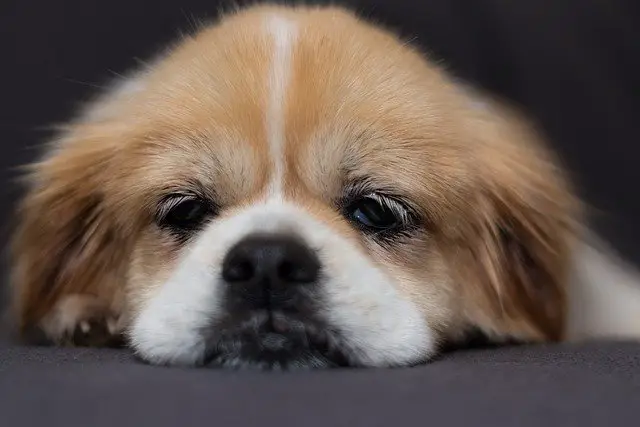‘Hi Doc, my dog in pain after glands expressed the other day’. I called my vet and asked this question.
Thankfully, the issue got resolved within a couple of days and my dog did not need any major medication or treatment.
More often than not, that is the case with most dogs. However, some dogs might continue scooting or whimpering for days after having their glands expressed.
In this guide, we will cover all of the reasons why dogs might experience pain for days post anal gland expression procedure.
Why is my Dog in Pain After Anal Gland Expressed?
Your dog in pain after glands expressed since its impacted anal sacs may still be inflamed and sore. The expression process might also be painful due to the injection or shaving of fur which is done to aid the expression. Also, your dog might have developed an abscess or tear after the express.
Find out more in the next section.
Why is my Dog in Pain After Anal Gland Expressed? 8 Main Reasons
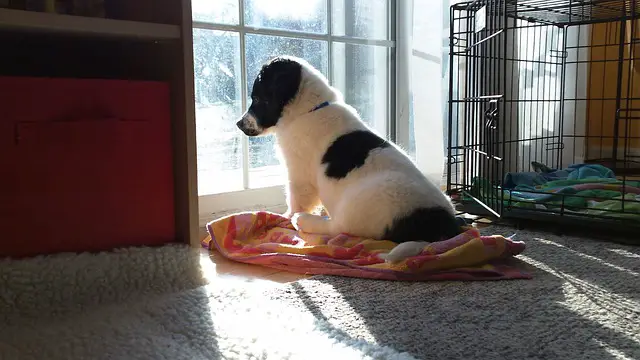
Here are common reasons why a dog might continue scooting or experience pain due to anal gland expression procedure:
1. Severe impaction
Anal glands, also called anal sacs, are present on either side of a dog’s anus.
These glands can sometimes irritate or hurt some dogs, especially if one has chronic diarrhea or loose stool. At other times, dogs can go without anal gland expression all their lives.
If the stools remain watery and loose, the water tends to accumulate in the anal sacs. Overtime, these sacs can get filled with inflamed cells resulting in infection, pain, irritation, and itching.
In dogs with impacted anal gland issue, the expression procedure may not completely eliminate the ‘debris and they might whimperfrom pain, for days after the procedure.
Often, such dogs might need a second, even a third anal gland expression procedure for relief.
2. Anal abscesses
An anal abscess is a painful anal gland infection of the anus. The abscess accumulates pus in the anal sacs and, if left untreated, can also burst releasing the pus into the anus and rectum.
It is very painful and affected dogs refuse to poop because of the pain they experience while passing stools.
You might be able to see the abscess as a red hot swelling under your dog’s tail. Your pet might also continuously lick the anus and the germs from its saliva can further aggravate the inflammation.
Despite the anal gland expression procedure, if your dog starts showing red, sore bum area, then please take it back to the veterinarian.
3. Injection given during anal gland expression
In dogs with anal sac disease, the impacted or hardened stools in the anal sacs may be too hard to be removed by hand.
For such dogs, vets inject a softening medicine into the anal sacs to help with the expression procedure.
The site of the injection could hurt for days after and even if there is no pain, a dog might continue feeling the ‘phantom’ pain for days after the procedure.
4. Rectal tears/injury during procedure
A sharp needle, swallowed bones, rough handing during the anal gland expression procedure, and bite by self or another dog can also cause a dog to be in pain after glands expression. Have these anal gland issues ruled out by a vet.
5. Razor burn
In hairy dog breeds like Golden Retriever, the vet might have to shave the peri-anal area to access the anus more easily. The shaving procedure can lead to a razor burn and that can be one of the reasons why your dog will refuse to walk, defecate, or even get up.
The razor burn can cause soreness, irritation, and itching and could make your dog’s butt very sensitive to slightest touch or pressure.
6. Perianal fistula and folliculitis infection
In dog breeds like German Shepherd, cocker spaniel, and Golden Retriever, an anal gland diseasecalled perianal fistula is common. Such pets have chronic foul smelling wounds near their anal tissues.
Also, another common infection of the anal area in many dog breeds is folliculitis. The hair follicles in the anus get inflamed due to the stools causing severe pain to the affected dogs.
Despite expression of the anal glands, such anal sac disorders could cause your dog to scoot or whimper in pain. Sometimes, the only way to provide relief to the dog is medication. Your vet might also advise surgical removal of the infected anal glands.
7. Constipation
If your dog continues to bite and lick the anus or whimpers during defecation, it could be constipated. The dry, hard stools, on their way out, might hurt the already tender and sore anal sacs. As a result, your dog will be in a lot of pain despite having its anal glands expressed.
8. Rectal polyps or tumors
Rectal polyps are benign growths on the rectal areas. In rare cases, very large polyps could be cancerous. Signs of rectal polyps include trouble during defecation, pain, bloody stools, scooting, biting, licking the anus, etc.
If your dog has recently had its anal glands expressed, the polyps may have developed post the procedure.
Also Read: Why Does my Dog Smell Like Fish
Does it Hurt a Dog to Have its Anal Glands Expressed?
Check out the anal gland expression procedure in the video below.
As you can see, the procedure isn’t at all painful for dogs. Many dog parents even choose to do it at home.
However, you can have your vet or your dog groomerdo it for you. When done by an experienced person, anal gland expression need not be painful for your dog.
In rare cases, if the anal sacs are severely impacted with hardened stools and anal gland secretion, then your dog could need an injection to soften the debris. This helps your vet remove all of the accumulated anal gland matter.The injection will hurt or sting your dog but the pain should not last too long.
A dog that has chronic constipation may have rectal tears and that can be painful while passing bowels.
Under normal circumstances though, anal gland expression should not hurt your dog.
Why is my Dog Still Scooting After Anal Gland Expression?
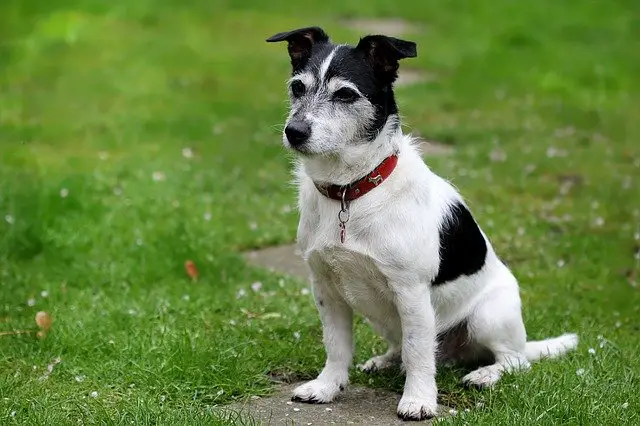
The first time you see your dog scooting or dragging its butt across the floor or on the carpet, it might seem funny. However, if you have been a dog owner for a while, then you know that butt scooting in dogs isn’t a funny matter at all.
Scooting is an indication that your dog has an itchy anus. Itchy anus after anal gland expression can be attributed to the following reasons:
1. Intestinal worms
Dogs with intestinal parasites like tapeworm might scoot to relieve the itchy sensation. You might see the segments of the worm in their feces or even on your carpet- they appear as tiny white rice flakes. If you suspect worms, please follow regular de-worming protocol to help your pet get relief.
2. Persisting anal gland impaction
If your dog continues scooting even after gland expression, then its anal sacs may be still very much impacted. Even small remnants of the anal gland secretion in the anal sacs can cause irritation and itching which your dog will try to eliminate via scooting.
3. Distended anal sacs
In dogs with chronic anal sac disease, the stools do not express the glands on their way out. The anal sacs tend to get filled up very quickly and the accumulated matter might even cause them to distend. The build-up of anal gland secretion tends to hurt your dog. To relieve the pain and pressure, your pet might scoot on the carpet or the floor. You might see some secretions on the carpet.
Such dogs tend to need another expression procedure or even surgery or medication for relief.
What to Do for a Dog in Pain After Glands Expressed?
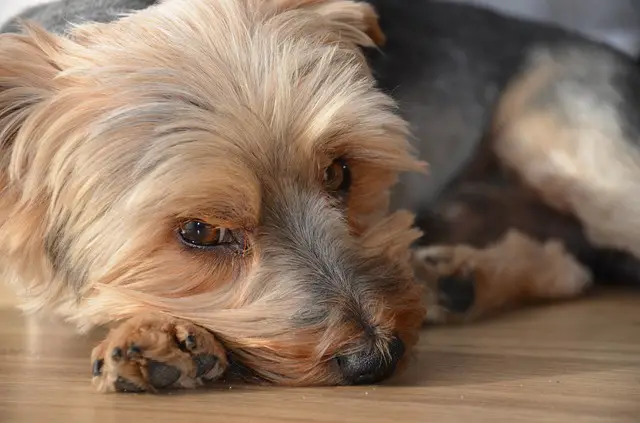
Here are some steps to take if you see your dog whimpering, scooting, or trying to avoid defecation after anal gland expression:
1. Wait for a few days
Dogs self-regulate most of their health conditions. In case the pain is due to the injection or razor burn obtained during the procedure, then wait for it to subside. Your vet can also prescribe some pain-relief medication to manage the pain.
2. Tweak your dog’s diet
To prevent constipation in your dog, feed it a fiber-rich diet. You can feed some pureed pumpkin, sweet potatoes, and other fiber-rich dog foods like apples and flax seeds. Your doctor can also suggest some fiber-based supplement like Metamucil to keep your dog regular.
Also Read: Best Dog Food for Anal Gland Issues
3. Use stool-regulating supplements
An over-the-counter supplement like this one can prevent canine anal sac impaction. It contains probiotic, fiber, and other vet-approved enzymes that promote emptying of the anal glands.
4. Provide it with a warm compress
Give your dog a heating pad or a warm compress to rest its butt. The heat from the pad will help minimize the pain by numbing the area.
Many heating pads are available these days. They also come with the auto-shut off feature. Some are also waterproof. The warmth of the pad will provide much relief to your poor pet.
5. Observe your dog’s stools
Keep an eye on your dog’s stools. Make sure they are not too dry and hard – an indication that your dog is constipated. Also, the stools should not be watery and loose as this will prevent the emptying of the anal glands.
6. Check your dog’s under-the-tail area
Make sure your pet has no visible abscess, tears, or swollen and red tissues around the anal sphincter. If you notice any of these signs, please have it checked for rectal tears, anal gland infection, tumors, etc. These conditions need medicines like oral antibiotics and/or surgical removal of the glands for resolution.
What Should I Put on my Dog’s Sore Bum?
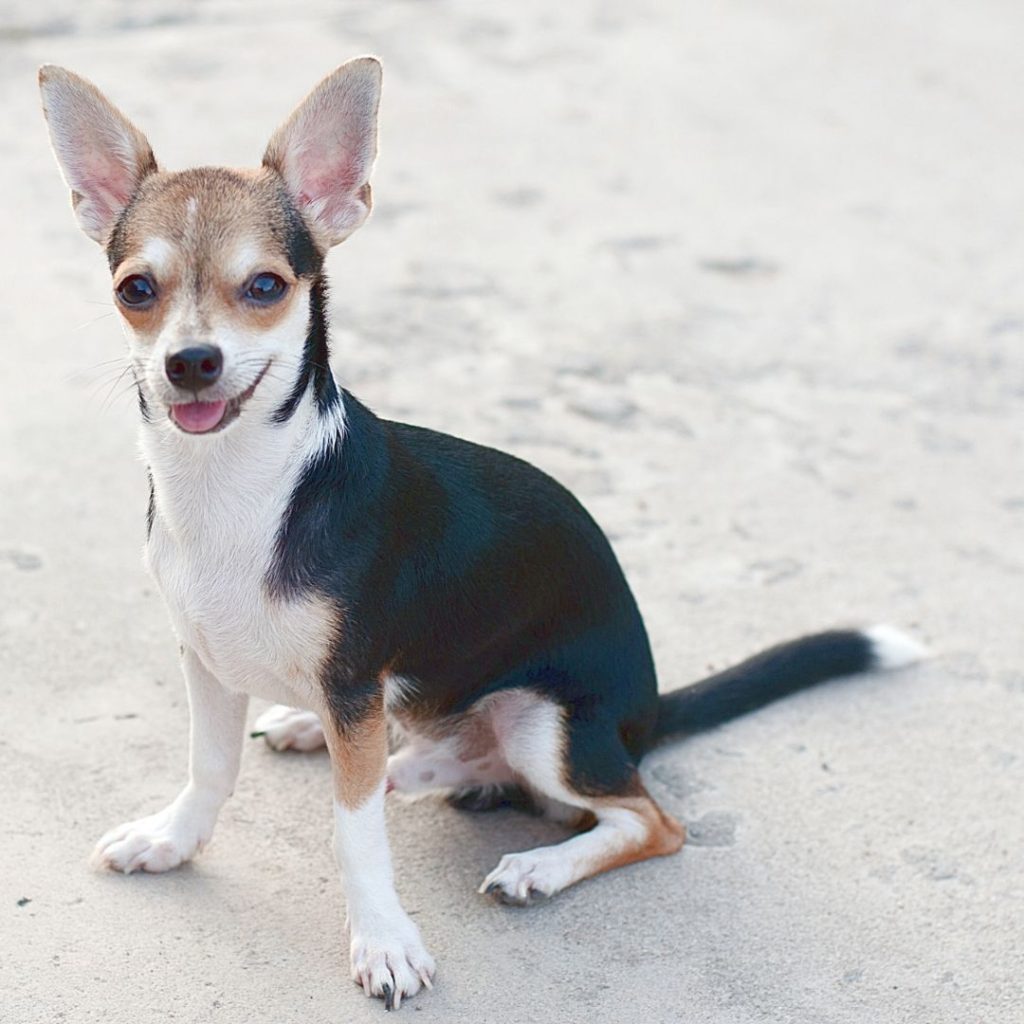
Vets recommend the following tips and medicines for managing a dog’s sore bum:
1. Antibiotic creams
Antibiotic creams like Clindamycin can prevent the anal gland problem from worsening. Do not let your dog lick the medicine. Use an Elizabeth collar to prevent your pet from biting or licking the inflamed anus.
2. Vaseline
Vaseline or petroleum jelly can help lubricate the anal sphincter and prevent dry and hard stools from worsening anal fissures or the rectal tears. Use a glove to apply the Vaseline inside your pet’s anus. The slippery, lubricating barrier can prevent painful bowel movement for your pet.
3. Coconut oil
This is another lubricating substance you can apply on your dog’s sore butt. It can prevent pain caused by constipation and also prevent itching. The best part about this natural remedy is that it is okay of your dog licks it.
Repeat application before and after bowel movement and several times a day.
4. Aloe vera gel
You can use an organic, preservative-free commercial Aloe-vera gel to soothe irritation and pain in your dog’s scent glands. Alternatively, use the gel obtained from the leaves of an aloe plant. The aloe gel cools, soothes, and lubricates the anal sac irritation. It also has anti-microbial properties so you can also use it after anal sac removal surgery.
5. Hydrocortisone cream
To break the cycle of itching and biting of the anus, use 1% hydrocortisone cream on your pet’s sore butt. However, you must discontinue use of this cream after 2 days since it is a steroidal product. Also, prevent your dog from licking the cream off by using a collar.
Conclusion – Why is my Dog in Pain After Glands Expressed?
Many factors can cause pain in dogs post anal gland expression.
One of the main reasons for dog in pain after glands expressed is that the anal gland impaction may be too severe and your vet might not have removed all of the anal sac matter. Secondly, injection or shaving done for the procedure can also cause pain, itching, or irritation for days. Lastly, your dog might have an abscess or tear which can also lead to pain.
If the pain persists for more than 4 days, please have your vet re-examine your dog.
